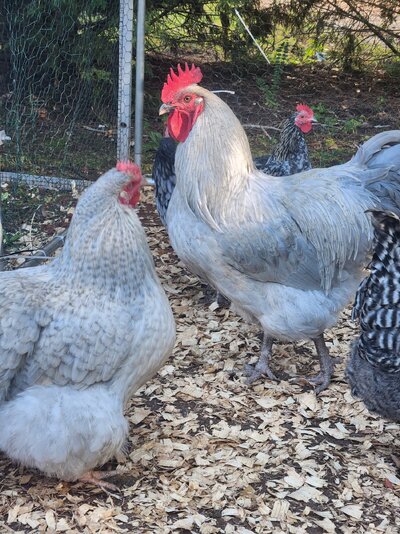- Jun 21, 2018
- 10
- 5
- 81
I am new to this site so I will do my best. I was excited to get a lavender roo and in isabel lavender orpington hen Thinking I will get a lot more if I bred them together , After reading some previous threads about genetics, I know. I will need more than five minutes to grasp Everything. I'm trying to absorb it. I saved the info To my phone So I can look over it and study it, But in short, If I want more lavenders, What partners Should I get for them if not each other? Thanks






